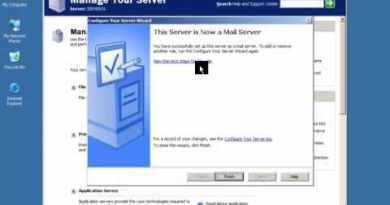RFC 3261 Simplified: Session Initiation Protocol Part-One
RFC 3261, Session Initiation Protocol, is a very dry document. It is hard to read and hard to understand. In this RFC 3261 Simplified series, we are going to use examples and analogies to explain RFC 3261, Session Initiation Protocol, in a language that will appeal to a wide spectrum of audience.
This is part I in which we go over an introduction to SIP, followed by a sample call capture and analysis of the messages in that sample call.
If you have any questions/ comments please use the comments section below. For tutorial suggestions/requests, please send us the details by using the contact section of our website, http://www.SIPtopia.org
by SIPtopia
snmp protocol




OSM 🥰
Please explain different real time call flow scenarios and error handling/response code procedure in future session.
Nice explanation
I am a beginner and it is a helpful presentation .
Wao,great job,pcap analysis was very useful.
Very impressive tutorial
BYEs dont have ACKs. only from INVITES resulting to 200 OK that get an ACK. Noted John. proceeding carefully now to part 2. break time for now..
very crisp and clear explanation , thank you sir!
Great video
excellent tutorial. i can't wait to watch your next tutorial.
"Reading an RFC is like watching paint dry." Spot on!
Very good explanation
Wow man u deserve more subscribers
i am a fan of yours my friend!
First of all thanks a lot for your great efforts.
I am trying to visit the http://www.SIPtopia.org website but it responds with "Sorry, your request cannot be accepted." is the site still available? if not, where can I get the presentation, VMs you use?
Hi! Thank you for this tutorial! Is it ACK after 200 OK for INVITE request mandatory to a call to be established or, in some scenarios, 200 OK is enough?
Sorry, your request cannot be accepted.
Quesions sir.
1. What is the ideal SIP setup for large inter geography infra?
2. Is it ideal to have both 3 ways of configuration in 1 design? e.g. china to japan SIP setup.
3. Which SIP setup is best?
Thank you so much
God, i love this tutorial! Thank you so much!
Great work, It is really inspired… I have just build my own SIP lab… thx
First of all thank you very much for putting up such a video. Really appreciate that. I also wanted to understand the call flow @16:03 wherein Tarzan's trace, the INVITE request from Tarzan to B2BUA is Request: INVITE sip:4444@192.168.1.3. (no 5060 port seen here in the trace)
1. All the "request" messages in this video are accompanied with port 5060, except the very first INVITE message from Tarzan, so very first INVITE is not seen with :5060, is that correct?
2. Also, you have mentioned "ACK" as a "message" as in response to 200 OK sent for INVITE. However, in the traces why the "ACK" is being shown here as "Requests" or "ACK" is always a request and if it is a "request" what exactly is it "request"ing here?
Thank you.
Very good!
very well explained, I am the beginner in this field, so I think this knowledge will help me a lot
beautiful explanation … thank you
Very good tutorial, you know about the event of receivein server 500 error message?
Tutorial is very good. Please let me know if you have given video sessions on VOLTE call flows as well.
Good Tutorial Dear… Really…
Few queries here::
Difference between via and contact?
Why ACK request doesn't increase cseq?
what does nonce parameter in Register message represent?
nice explanation.
I can't get over how helpful your entire series are. Can you do RFC 1889 and RFC 3550 for RTP as well?
simple to understand, Great work
so, do all this 7 tutorial cover rfc3261 completely(top to bottom)?
Thank You soooo much.. going to watch part 2 now
great sum up of RFC thanks for this knowledge sharing, greatly appreciated!!
Really Simplified SIP… Going to part 2 now 🙂
Excellent tutorial! Going to watch other parts. This is the first SIP RFC 3261 protocol specific tutorial i came across online. Can you please send me your email id? Thank you very much!
Regards,
Very well presented. A very short session with tremendous fundamental information. Moving to Part II now.